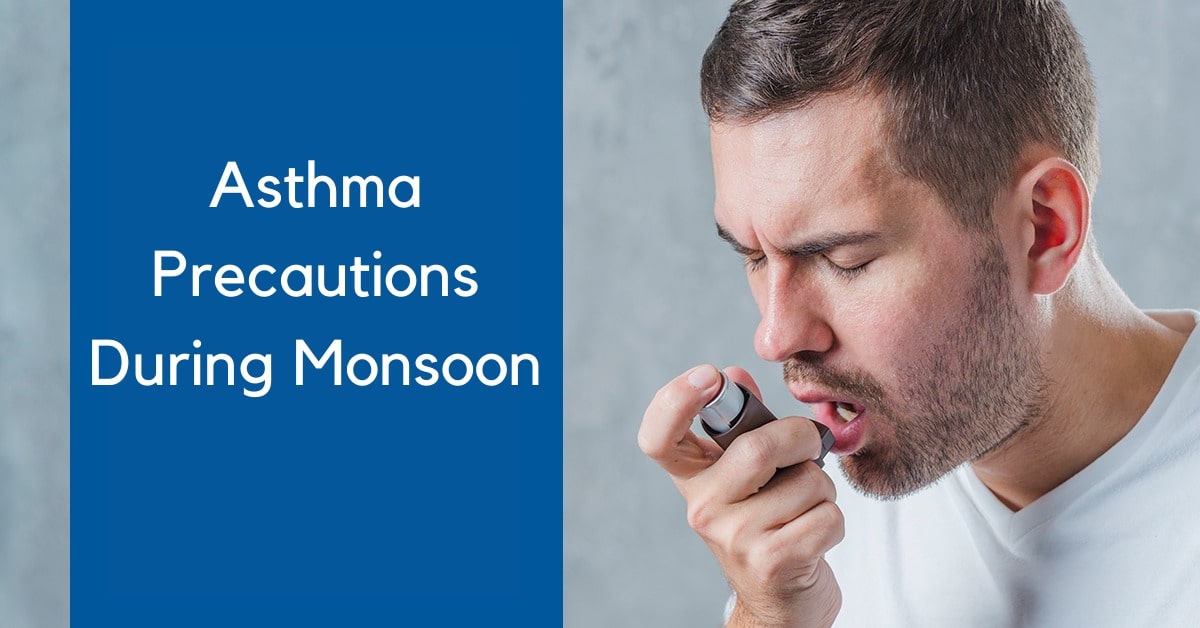Monsoon And Asthma In view of the change in weather, it is very important to prepare an action plan so that the condition of asthma patients does not become serious. Due to this, many dangerous situations can be controlled in time. As the monsoon season is going on and if there is an asthma patient in your house, then let us know how to take care of him.
Monsoon And Asthma: Asthma is a serious respiratory condition characterized by inflammation of the airways and narrowing of the airways. It affects approximately 34 million individuals nationwide. While the onset of the monsoon brings respite from the sweltering heat, this season brings with it a host of problems for people suffering from asthma. Changing weather patterns, increased humidity, as well as allergens such as fungus and dampness, dust mites, etc., can severely aggravate asthma symptoms. Keeping this in mind, asthma can be managed properly by preparing an asthma action plan from summer to monsoon.
What is an Asthma Action Plan? (Monsoon And Asthma)
 An Asthma Action Plan is a written worksheet created in consultation with a doctor, with instructions on when to take medications, the severity of the condition, triggers, allergies, etc. Which helps asthma patients to keep their condition under control. For patients who develop symptoms during monsoon, it is important to keep updating your action plan in consultation with the doctor. In most cases, the plan can be divided into three parts.
An Asthma Action Plan is a written worksheet created in consultation with a doctor, with instructions on when to take medications, the severity of the condition, triggers, allergies, etc. Which helps asthma patients to keep their condition under control. For patients who develop symptoms during monsoon, it is important to keep updating your action plan in consultation with the doctor. In most cases, the plan can be divided into three parts.
Green- which is a safe zone where asthma symptoms are under control and long-term medication is continued as prescribed by the doctor.
Yellow Zone – occurs when symptoms are currently being experienced and quick-relief medications are needed as prescribed by a doctor.
Red Zone – Occurs when the symptoms have increased severely. Here, an action plan becomes all the more important, and immediate medical treatment is required if the symptoms do not improve.
Doctors use a test called peak flow rate to measure how much air a person can blow out of their lungs. The test helps determine whether a person’s lung function is in the good range (green), the warning range (yellow), or the dangerous range (red).
Why is an action plan important?
Early Detection and Prevention: It helps individuals to identify early warning signs and take preventive measures. By understanding their triggers and symptoms, a person can manage their condition, thereby reducing the risk of a severe asthma attack. The plan outlines steps to take during different situations, such as increased humidity, exposure to allergens, or sudden weather changes so that individuals can avoid potential triggers.
Medication Management: A well-crafted action plan that keeps individuals informed about complete medication regimens. It also provides complete information on routine preventive medicines, rescue inhalers, and any changes required based on changing weather conditions. The plan also emphasizes the importance of following the prescribed medication schedule to ensure asthma control and consulting with healthcare professionals for any necessary changes.
Avoid Allergy: Allergies like mold, pollen, and dust mites often increase during the summer to monsoon months. The Asthma Action Plan informs individuals about common allergies and also about preventive measures. This can include advice such as keeping windows closed, using air purifiers, and regularly cleaning and dusting living spaces to reduce exposure.
Preparedness for emergency situations: Prevention is important, but being prepared for emergency situations is also essential. The Asthma Action Plan outlines steps to take during a severe asthma attack or exacerbation. This includes instructions on how to use rescue medication, how to contact health care professionals, and how to get emergency medical attention if necessary. By having a clear plan, individuals and their caregivers can act quickly and effectively during an emergency, potentially saving lives.
Better Quality of Life: A specially designed asthma action plan for summer to monsoon months promotes better disease management, thereby improving your lifestyle. By following the guidelines in the Action Plan, individuals have fewer asthma symptoms and fewer hospital visits. With this, the patient can participate in various activities without any tension.
Also Read: Brain Fog: Top Tips To Control Your Mind And Get Relief
Also Read: Infertility: Causes And Factors Causing Infertility In Men and Women



